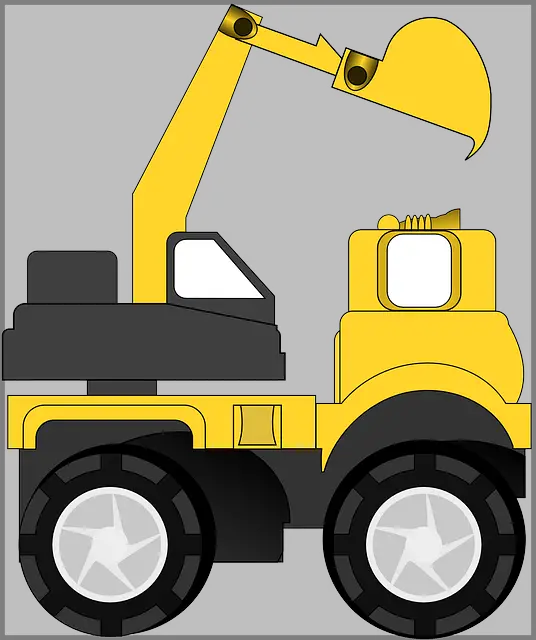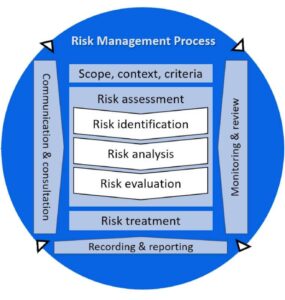Things to know before hiring excavating contractors

excavating contractors
Things to know before hiring excavating contractors. Excavating contractors near me is a difficult task. There are many jobs that excavation contractors do, in addition to playing on the ground, transporting land, and operating large pieces of heavy equipment. Excavating contractors can work for a construction company or even own their own company. If they work for a construction company, they can be considered supervisors and have their own team that works to help them do the job. They can perform any task related to the soil, such as classification, site preparation, trenching, and more. Excavation Safety Guide
Excavation safety guide with photos
Site Preparation
In most construction projects, the excavation team will arrive at the site after the inspection team has delineated the lot and the boundaries of the house so they know where to dig. The excavation contractor or one of the crew will remove the soil at the depth required for the new foundation. The contractor is the one who makes sure that the soil is firm enough by compaction testing. If necessary, you can also try it using compact equipment. excavating contractors
The requirements are accurate, so the excavation contractor must be able to use transit and level to match the grade that the inspection team published. Once this is done, a foundation contractor pours the stem wall and footers. Once they are dry and ready, the excavation contractor will fill around the new base.
Moving across the earth
Things to know before hiring excavating contractors
If dirt must be moved, the excavation contractor will be called. This may include the construction of roads, the excavation of ponds, the excavation of sewers, the excavation of trenches for gas or water pipes, the classification of roads, and the operation of a trencher that installs flexible pipes under the ground without making trenches. What they can do will depend on the equipment they or the company they work for or that they own.
The equipment used for excavation works is expensive and ensuring them is expensive. Excavating companies or autonomous contractors that have small to medium-sized operations will lease or own front loaders, backhoes, excavators, ditches, skid steers, and compactors. Most will also own one or two large dump trucks to remove excess dirt.
Things to know before hiring excavating contractors
If you are a self-employed excavation contractor, you will be responsible for submitting competitive budgets and offers to acquire new jobs. They will also have to know what the excavation work rate is in the area where they have their business. Being an excavation contractor, you are considered a subcontractor. excavating contractors
The reason is that excavation is only part of the big project. For example, if a pool is being built for an owner, the contractor will dig the pool but will not exceed the entire project. Excavating contractors who work on their own can work for general contractors as needed. In most states, they must be authorized and bonded and follow safe practices in the workplace.
TABLE OF CONTENTS
1.0 PURPOSE
2.0 SCOPE
3.0 DEFINITIONS AND ABBREVIATIONS
4.0 REFERENCES
5.0 RESPONSIBILITIES
6.0 WORK INSTRUCTION
6.1 GENERAL
6.2 HAZARD IDENTIFICATION AND RISK ASSESSMENT
6.3 CONTROL MEASURES
6.4 SYSTEM OF SUPPORT
7.0 RECORDS
8.0 APPENDICES
1.0 PURPOSE
The purpose of this work instruction is to establish a generic Instruction for carrying out
excavations at the project site.
3.0 DEFINITIONS AND ABBREVIATIONS
Competent Person An Individual who has immediate knowledge of the subject, either by years of experience in the specific field, formal education, or specialized training pertaining to:
- – Job activity being performed;
- – Operation and use of specific equipment;
- – Potential hazards associated with specific jobs;
- – Applicable Safety, Health, and Environmental Standards;
- – Project HSE procedure pertaining to the tasks being undertaken.
Excavation
Excavation is the process of moving earth, rock, or other materials with tools, equipment, or explosives. It includes earthwork, trenching, wall shafts, and tunneling.
5.0 RESPONSIBILITIES
The following person has responsibilities mentioned in this work instruction:
Project Manager (PM)
6.0 WORK INSTRUCTION
6.1 GENERAL
a) Almost all construction work involves some form of excavation, in particular for foundations and drainage. In carrying out excavations the ground conditions can vary widely often over very short distances.
b) Excavation has a number of important applications including exploration, environmental restoration, and construction. Among these, construction is one of the most common applications for excavation.
c) Some of the different processes used in excavation include trenching, digging, dredging, and site development. excavating contractors
d) No soil, whatever its condition can be relied upon to support its own weight. In addition, loads imposed upon the edges of excavations by plants, buildings, men, and materials increase the danger of collapse.
e) A relatively small fall of the earth could involve a cubic meter of soil, which in terms of mass could weigh over a ton of material. Excavation safety guide with photos
6.2 HAZARD IDENTIFICATION AND RISK ASSESSMENT
b) The risk assessment should identify hazards associated with the work and lay down work instructions or control measures to eliminate or reduce the risks.
c) Where risks cannot be eliminated or reduced to an acceptable level then a safe system of working (including where necessary the provision of personal protective equipment) should be implemented as a means of safeguarding the workplace or person.
d) The following is a summary of the likely risks which may be encountered.
- – Falls of earth or trench collapse;
- – Falls into excavations;
- – Exposure to ground contamination;
- – Contact with ground contamination;
- – Exposure to toxic or oxygen-deficient atmospheres;
- – Reduced stability of nearby buildings or structures;
- – Falls of materials or plants onto persons in an excavation;
- – Unauthorized access by children or young persons to excavations;
- – Entry and Exit from excavation.
6.3 CONTROL MEASURES
a) A safe method of working should be established in conjunction with the site risk assessment. This safe method or method statement should be in writing and outline what work instructions are required to ensure the safety of those persons concerned with the works and any other persons likely to be affected.
b) All work on, or in excavations should be supervised by a competent person.
c) Drawings or plans showing the location of all services should be obtained. A work instruction can then be implemented to establish the “true” location, and such services exposed or marked. To support teams to monitor which areas of the Project / Site have already been scanned, Cable Detection Register has been compiled to ensure a suitable record can be maintained from the start of the Project during initial site surveys.
d) Where electricity, gas, and other underground services cannot be diverted and are in such a position that they can be damaged by the excavation process, they should be exposed by hand digging, and where necessary protected.
e) Before any excavation is started an Excavation Permit must be completed. Validity to excavate should not exceed one (1) week.
f) All excavations in excess of 1.2m should be either:
– Benched i.e. cut to form steps so that a line from the top of the bench to the bottom of the excavation should be equal to the batter required.
– Properly supported, i.e. shored or sheeted, etc. The system of support should be designed taking into account the loads imposed by ground conditions and any additional loads due to the proximity of plants, roadways, buildings, water table, etc. Emergency rescue procedure
– Excavated to a safe batter, this can be done in almost all soils provided that sufficient space is available, and a safe temporary slope known.
g) In poor ground conditions, it may be necessary to support excavations less than 1.2m deep. All excavations should consider the requirements.
h) In water-logged ground a system of de-watering may be necessary to improve stability; tests are usually needed, carried out by an experienced person, to show whether or not the ground is capable of being de-watered.
i) Where excavations are supported, the following conditions should be met:
– Timber packing should be used between metal props, metal sheets or piles.
– Poling boards, trench sheets, etc. should be set vertically.
– Any voids behind poling boards should be loosely backfilled.
– All walling should be horizontal. excavating contractors
– Ground props should rest on sole plates.
– Wedges should be driven between the poling boards, trench sheets, etc., and the walling. Each polling board trench sheet should have a wedge driven from the top of the waling and on alternate poling boards, trench sheets from the bottom. What is workers compensation insurance
– Where timber struts are used against a waling then lipping blocks should be used.
– When using expanding metal props only the proper pins should be used. Pins should be inserted from the top of the prop.
– No struts should be removed unless a suitable alternative has been previously installed.
– Persons should not be permitted to work beyond the protected area of an excavation, or in close proximity to the bucket of any excavator.
– Materials including spoil should not be stored closer than 1.5m from the edge of the excavation, and stacked so they cannot be accidentally displaced.
– Plant, where possible, should be positioned remote from the edge of the excavation and positioned so that it cannot fall or roll into the excavation.
– Proper lighting should be catered for when doing night work. workers compensation insurance
j) If any machine is required to tip material into the excavation, stop blocks or anchorage should be provided. If restraining ropes are used for such stop blocks or anchorage, they should be secured at least four times the depth of the excavation from the edge.
k) Persons should not remain in excavation or in the vicinity of tipping operations.
l) Where persons can fall from a fall risk position and there is a risk to cause injury or harm put in edge protection into an excavation or where other hazards exist at a lesser depth, i.e. starter bars, water etc. a rigid barrier should be erected and maintained.
m) Excavations, to which any member of the public, especially children, could gain access, should have a greater degree of protection. In addition, special thought should be given to visually impaired persons.
n) During hours of darkness, edges of excavations should be illuminated, especially where they are adjacent to public thoroughfares.
o) Where lighting is required for work in the excavation such lighting should be installed with equipment suitable for safe use i.e. intrinsically safe and/or protected against breakage.
p) The only means of access/egress into or out of excavations is by strategically placed ladders. Such a ladder should be secured at the upper resting place, or at the bottom by knocking in a piece of steel parallel to the ladder and securing with binding wire and reach a minimum of 1.070m above the landing. On no account should access/egress be gained by climbing sheeting, timbering, or other support work. Hazard identification and risk assessment
q) Walkways across excavations should be of sufficient width, at least 635mm, fitted with guardrails and toe boards, and secured to prevent displacement. excavating contractors
r) Only experienced and competent persons are allowed to install support systems for excavations, they and those persons authorized to work in the excavations should have their names recorded by the manager, or person nominated by the site manager.
s) Excavations should be kept clear of suffocating, toxic or explosive gases. These may be natural gases like hydrogen sulfide, methane, and sulfur dioxide, exhaust gases from nearby plants, or leaks from nearby pipes, sewers, or installations. The leakage of propane and butane from LPG cylinders is potentially very dangerous. The gas will sink to the lowest point and form an explosive concentration.
u) Note! On no account should compressed oxygen be used for the above purpose.
v) Tests should always be carried out in advance of work starting and be continued throughout the period of work. (Air Monitoring)
w) The following gives guidance to assist in the selection of temporary support systems for trenches to 6m in depth. The guidance should be read in conjunction with Temporary Works Design.
x) Thorough examinations using the Excavations Inspection Checklist are required to be carried out by the competent person in the following circumstances, before first entry, then again:
- – Daily prior to shifting no record is required;
- – Every seven days;
- – After the use of explosives;
- – After heavy rainfall;
- – After any damage to support work.
y) The results of these thorough examinations are to be entered in the site excavation Excavation safety guide with photos
z) In addition to the above, excavations should be inspected each shift prior to work commencing, for which no record need be kept. excavating contractors
6.4 SYSTEM OF SUPPORT
Adequate support of excavations depends upon the type and depth and the nature of the ground and groundwater conditions. A variety of materials and methods may be used, and would include:
6.4.1 Timber
a) Timber support is seldom used these days as a support material for excavations, other materials having taken their place.
b) However, it still finds use in such as tunneling, shafts, and headings.
6.4.2 Steel Trench Sheeting
a) Trench sheeting has the advantage of easy driving in poor ground conditions, prior to the excavation being commenced.
b) In the hard ground, it can be partly driven initially, and then further driven as the excavation proceeds.
6.4.3 Steel Sheet Piling
– Because of its structural strength, steel sheet piling is the only really satisfactory material where cantilever support is used.
b) In all cases where steel sheet piling is the method of support, the calculations which determine the specification should be carried out by a competent person.
6.4.4 H-Piling or Soldier Piling.
a) In this system, steel universal “H” column sections are pre-driven, at pre-determined centers prior to any excavating.
b) If the ground conditions make driving difficult or, if vibration or noise is to be avoided, the steel sections can be positioned in pre-drilled holes with the bottom end held in concrete.
c) As the excavation proceeds, the exposed face is supported by timbering or trench sheeting set horizontally between the piles.
d) The “H” piling method has the following advantages:
– The main structural support is in place before the excavation commences.
– The piles can be installed between service locations and horizontal sheeting located above and below. If the resulting gap is excessive, vertical sheeting can be installed behind the horizontal members to fill the gaps.
6.4.5 Proprietary Systems
a) These systems are specifically designed and used so that during the installation of the support there is no need for persons to enter the excavation.
b) Examples of types of proprietary systems and their intended use are shown as follows: Excavation safety guide with photos
6.4.6 Hydraulic Frames, Walling and Shores
a) Are made up of sheeting or structural sections permanently attached to hydraulic struts. The systems can be installed and jacked against the sides of the excavation without anyone entering the trench. Square or rectangular plan walling with two-way jacking are available for pits and manholes. excavating contractors
b) Proprietary waling frames are normally used in conjunction with trench sheeting. Where these are crossing services, small gaps may be left between the appropriate trench sheets.
6.4.7 Boxed Systems
a) Are modular strutted support walls that are installed by lowering them into a pre-dug trench (thereby acting as a safety box to protect workmen) or by digging them in progressively and therefore providing positive applied support to the trench face.
b) Boxes of this type can be extended in width, and adding other boxes vertically can provide a safe workplace at increased depths.
6.4.8 Plate Lining Systems
a) Generally, consists of vertical soldier posts kept apart by strutted members. Wall plates are then inserted, spanning between the soldiers to support the trench face. Such systems may be used to form a continuous wall, and are usually installed by the dig and push method.
Extra care is needed when the line of the excavation crosses services and where manhole construction is required.
b) Since the system can be dismantled into smaller components it is far easier to remove from the tight ground than box systems.
How safety officers can save themselves from the court in case of an accident
Excavation safety guide with photos






